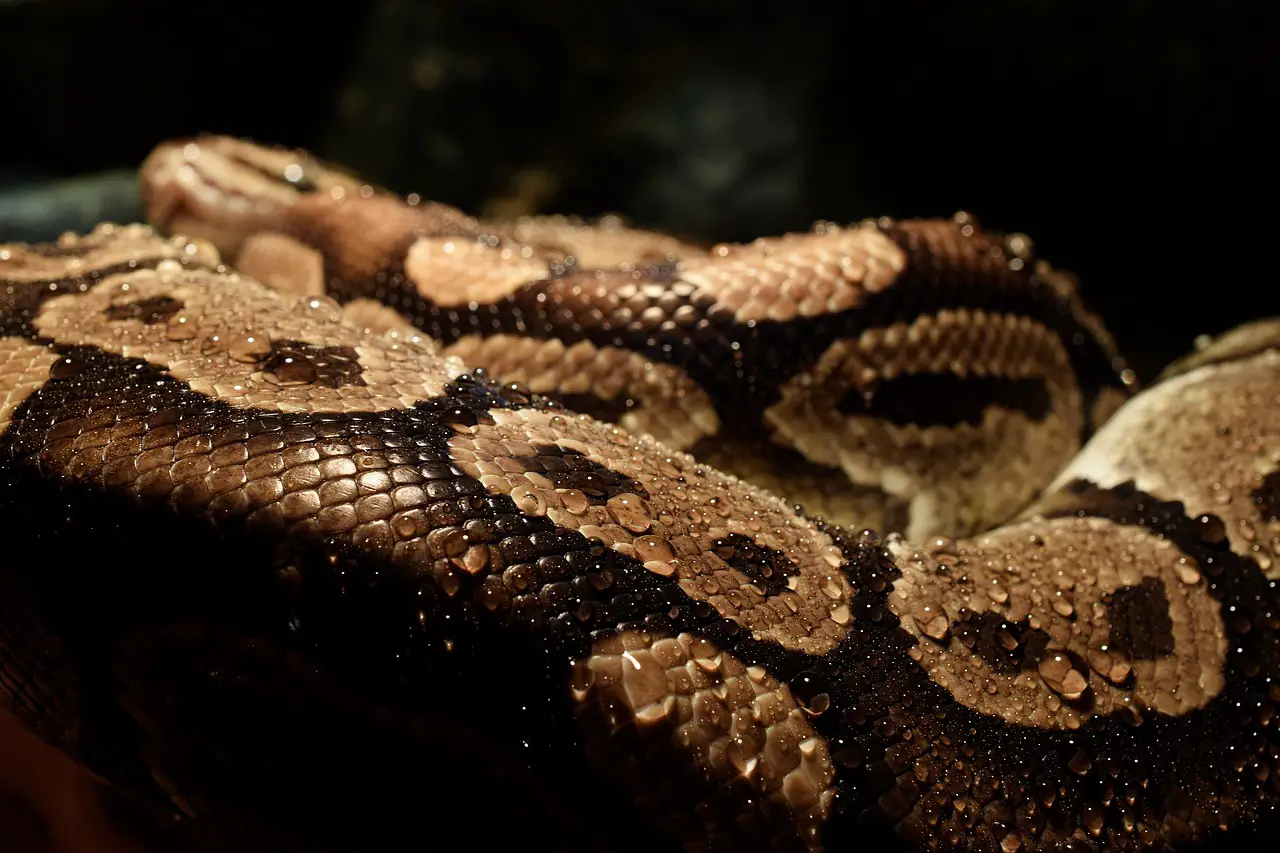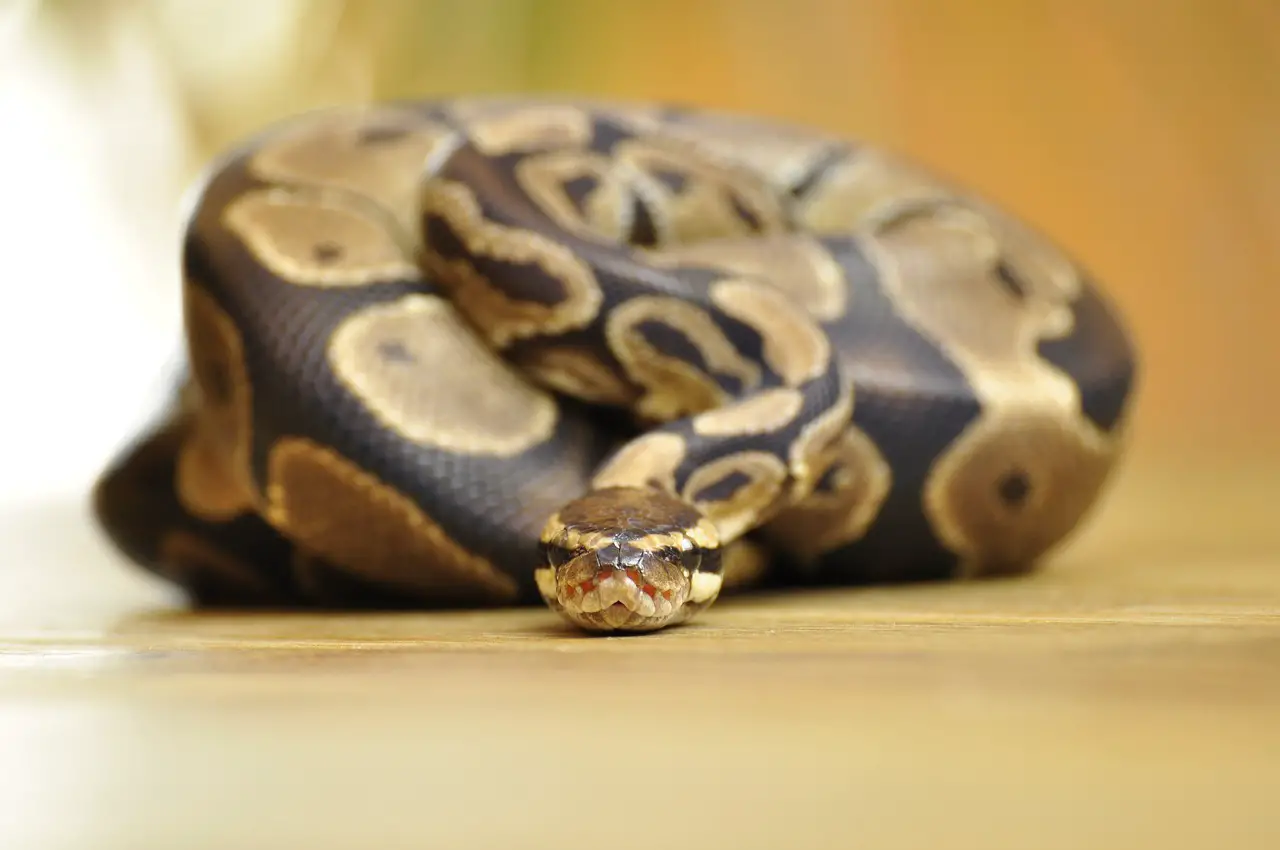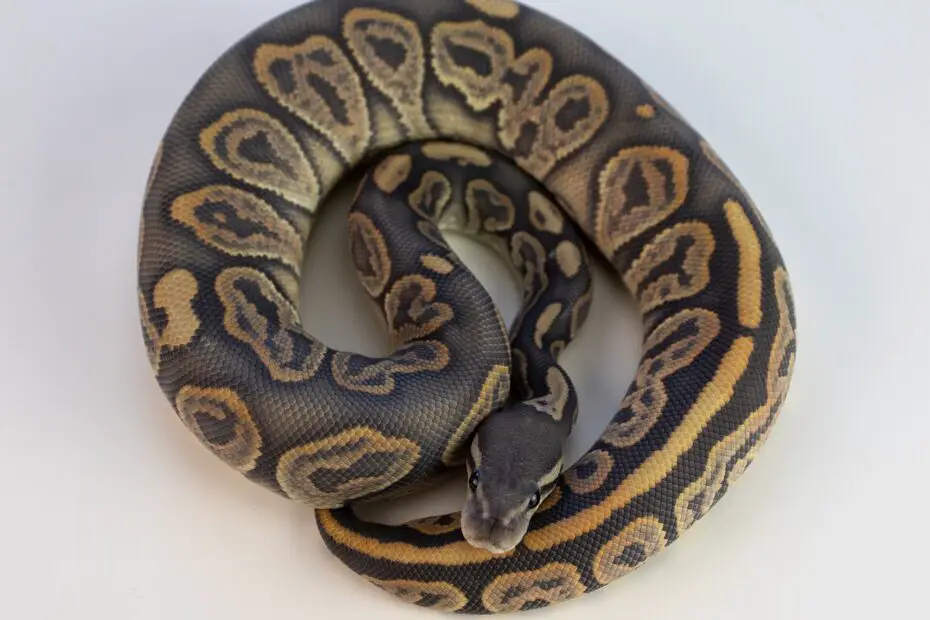Ball pythons are fascinating reptiles that require specific environmental conditions to thrive in captivity. One crucial factor to consider is humidity. In their natural habitat, ball pythons are exposed to a certain level of humidity that is vital for their overall well-being. As responsible snake owners, it is essential to understand the significance of proper humidity levels and how to maintain them in the enclosure.
In this article, we will explore the importance of Ball Python Humidity, the ideal humidity range, methods to maintain humidity, and the potential issues that can arise from incorrect levels. So, let’s delve into the world of ball python humidity and ensure the optimal conditions for these remarkable reptiles.
You may also want to know if ball pythons are dangerous.
Understanding the Importance of Ball Python Humidity
Natural Habitat and Humidity Levels
Ball pythons originate from the tropical regions of Africa, where they inhabit areas with varying humidity levels. In their natural environment, these snakes encounter humidity ranging from 50% to 60%, with occasional spikes during the rainy season. This humidity plays a crucial role in their respiratory function, hydration, shedding, and overall health.
Significance of Proper Humidity in Captivity
When kept in captivity, ball pythons rely on their owners to provide an environment that closely mimics their natural habitat. Maintaining appropriate humidity levels is vital to ensure their physiological functions are adequately supported. Insufficient humidity can lead to dehydration, difficulty shedding, and respiratory issues, while excessive humidity can result in skin problems and respiratory infections. Therefore, achieving the correct humidity balance is essential for the well-being of your ball python.

Ideal Humidity Range for Ball Pythons
Ball Python Humidity: Optimal Humidity Levels
To create a suitable environment for your ball python, aim for a humidity range of 50% to 60%. This range allows them to maintain proper hydration and supports healthy respiratory function. However, it’s important to note that during the shedding process, slightly higher humidity levels (around 60% to 70%) are beneficial to facilitate successful sheds.
Ball Python Humidity: Providing a Humidity Gradient
Creating a humidity gradient within the enclosure is recommended, allowing your ball python to choose the humidity level that suits them best. This can be achieved by providing areas with slightly higher humidity, such as a humid hide, while maintaining the overall humidity range in the enclosure.
Maintaining Humidity in the Enclosure
Choosing the Right Substrate
One effective method to maintain humidity is by selecting an appropriate substrate for the enclosure. Substrates such as coconut husk, cypress mulch, or a mixture of these materials can help retain moisture and gradually release it into the air. Avoid substrates that can cause excessive dryness, such as newspaper or paper towels.
Utilizing Humid Hideouts
Humid hideouts are an essential addition to the enclosure, providing a microclimate with higher humidity levels. These hideouts can be created using a plastic container filled with damp sphagnum moss or a commercial reptile hide designed for this purpose. The moist hideout provides a retreat for your ball python when they require increased humidity.
Incorporating Moisture Sources
In addition to a suitable substrate and humid hideout, incorporating moisture sources can help maintain humidity levels. This can be achieved by placing a shallow water dish in the enclosure, which not only serves as a hydration source but also contributes to the overall humidity. Mist spraying the enclosure occasionally, particularly in the evening, can also provide a temporary boost in humidity.
Measuring and Monitoring Humidity
Hygrometers and Their Placement
To ensure accurate monitoring of humidity levels, it is important to use a reliable hygrometer. Place the hygrometer in a central location within the enclosure, away from direct heat sources or water dishes, to obtain an accurate representation of the humidity throughout the enclosure. Regularly check the hygrometer readings to maintain the desired humidity range.
Adjusting Humidity Levels as Needed
Based on the hygrometer readings, adjustments may be necessary to maintain the appropriate humidity levels. If the humidity is consistently too low, you can increase it by misting the enclosure more frequently, adding a larger water dish, or adjusting the moist hideout. On the other hand, if the humidity is consistently too high, increasing ventilation or reducing the frequency of misting may be required.
Potential Issues with Incorrect Humidity

Dehydration and Skin Problems
Insufficient humidity can lead to dehydration in ball pythons. This can manifest as wrinkled skin, sunken eyes, and reduced appetite. Inadequate hydration compromises their overall health and can potentially lead to serious complications. Additionally, low humidity can cause difficulties during shedding, resulting in retained shed or incomplete sheds.
Respiratory Infections
On the other end of the spectrum, excessive humidity can create a favorable environment for bacterial and fungal growth, potentially leading to respiratory infections in ball pythons. It is crucial to maintain the humidity within the recommended range to prevent such complications.
Humidity and Shedding
Role of Humidity in the Shedding Process
Proper humidity is especially critical during the shedding process. The increased humidity aids in loosening the old skin, allowing the ball python to shed it more easily. Insufficient humidity during shedding can lead to stuck shed, which can constrict blood flow and cause severe complications.
Ensuring Proper Conditions for Successful Sheds
To facilitate successful sheds, you can increase the humidity levels slightly (around 60% to 70%) a few days before shedding is expected. This can be done by misting the enclosure more frequently, adding additional moisture sources, or providing a humid hideout with damp sphagnum moss. The slightly elevated humidity helps soften the old skin and promotes a complete shed.
Conclusion
Maintaining proper humidity levels is a crucial aspect of ball python care. By understanding the significance of humidity, providing an appropriate environment, monitoring humidity levels, and adjusting as needed, you can ensure the well-being and health of your ball python. Remember to create a humidity gradient, choose suitable substrates, incorporate humid hideouts, and provide moisture sources to maintain the desired humidity range. By prioritizing humidity in your ball python’s enclosure, you contribute to their overall comfort, hydration, respiratory health, and successful shedding.
FAQs
- What is the ideal humidity range for ball pythons?
- The ideal humidity range for ball pythons is 50% to 60%, with slightly higher levels (around 60% to 70%) during shedding.
- How often should I mist the enclosure to maintain humidity?
- The frequency of misting depends on various factors such as substrate, enclosure size, and ambient conditions. However, misting once or twice a day is typically sufficient to maintain appropriate humidity levels.
- Can I use a humidifier to regulate the humidity in the enclosure?
- Using a humidifier can be beneficial, especially in larger enclosures. However, it is important to ensure that the humidifier does not create excessive humidity, as it can lead to respiratory issues. Regular monitoring is essential.
- What should I do if the humidity levels are consistently too low or too high?
- If the humidity is consistently too low, you can increase it by misting more frequently, providing a larger water dish, or using a humid hideout. If the humidity is consistently too high, you can increase ventilation and reduce misting frequency.
- Are there any specific humidity requirements during the breeding season?
- During the breeding season, slightly higher humidity levels (around 60% to 70%) can be beneficial to support successful breeding and egg incubation. Monitor the humidity closely during this period.
